



Newborns have tiny stomachs and need to be fed often. As they grow, babies can hold more milk so feedings may become further apart and take less time. In the first few weeks, you may need to wake your baby to feed if they sleep longer than 4 hours.
Breastfeed every 1½-3 hours, or 8-12 times in 24 hours.
In the first few days, newborns need 2-3 oz. of iron-fortified infant formula every 3-4 hours.
By the end of the first month, your newborn needs about 4 oz. every 4 hours.

Your baby may start to feed on a schedule. Instead of focusing on fixed amounts, let your baby tell you when they have had enough.
Breastfeed your baby on-demand, at least 7-9 times in 24 hours.
If bottle feeding, offer a small amount at a time, about 4-6 oz.
When your baby starts teething, they may want to nurse more often.
Your baby needs about 4-6 oz. of iron-fortified formula every 3-4 hours, a total of 25-45 oz. per day.
During growth spurts, at 2 to 4 weeks, 6 weeks, 3-4 months, and 6 months, your baby may need to eat more often.

Feed solids with a spoon and from a bowl, never from a bottle.
Continue to nurse on-demand, about 4-6 times in 24 hours.
Babies may experience a growth spurt around 6 months of age and may feed more often.
Offer breast milk in a cup.
Offer 24-32 oz. per day of iron-fortified infant formula.
Offer formula in a cup.
Use breast milk or formula to prepare 2-4 Tbsp. iron-fortified infant cereal. Offer twice per day.
2-4 Tbsp. of small pieces of dry bread, baby crackers, and cereal. Offer twice per day.
4-8 Tbsp. per day.
Cooked, pureed, mashed vegetables.
4-8 Tbsp. per day.
Cooked, pureed, mashed fruits.
Applesauce, pureed peaches, or mashed banana.
2-4 Tbsp. per day.
Plain strained, mashed, or pureed meats, poultry, eggs, fish, or legumes.
Smooth whole milk yogurt.
Smooth, creamy peanut butter, spread thin on a cracker or mixed with applesauce and cinnamon and spread on bread.
Here are some examples of what meal and snack portion sizes might look like on my plate.
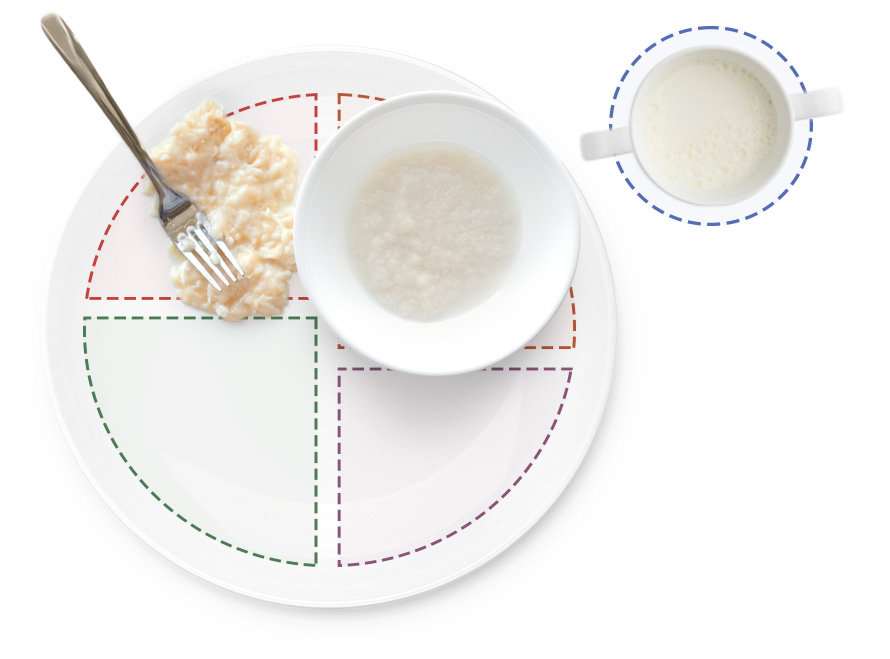

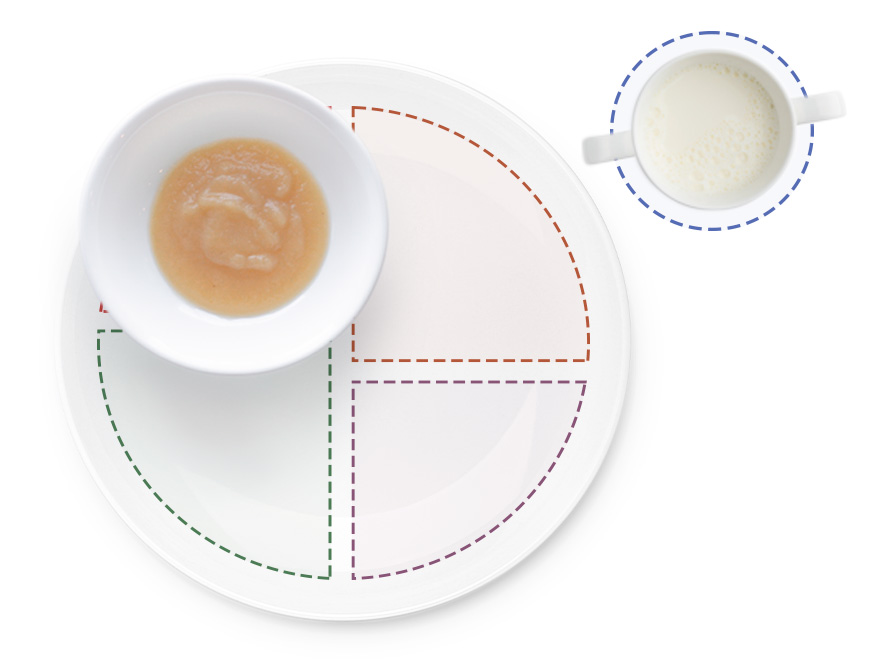
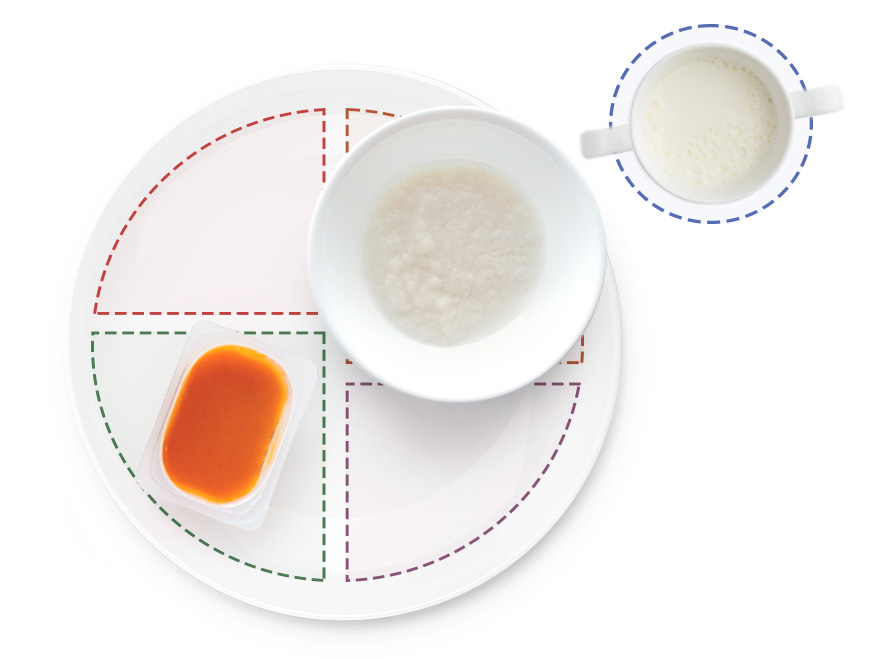

As your baby grows and learns new eating skills, try different textures and foods.
Continue nursing on-demand, at least 4 times in 24 hours.
If your baby seems less interested in nursing after you introduce solids, try nursing before you offer solids.
Offer breast milk in a cup.
24-32 oz. per day.
Offer formula in a cup.
4-8 Tbsp. per day.
Plain iron-fortified infant cereals.
Plain rice or pasta.
Baby crackers, small pieces of bread, or soft tortillas.
8-12 Tbsp. per day.
Plain cooked vegetables, mashed with a fork.
8-12 Tbsp. per day.
Peeled soft fruit in bite-size pieces.
Unsweetened canned fruit.
4-8 Tbsp. per day.
Finely ground, chopped, or diced meats, poultry, eggs, fish, or cooked mashed beans.
Cottage cheese or mild cheese.
Smooth, creamy peanut butter, spread thin.
Here are some examples of what meal and snack portion sizes might look like on my plate.
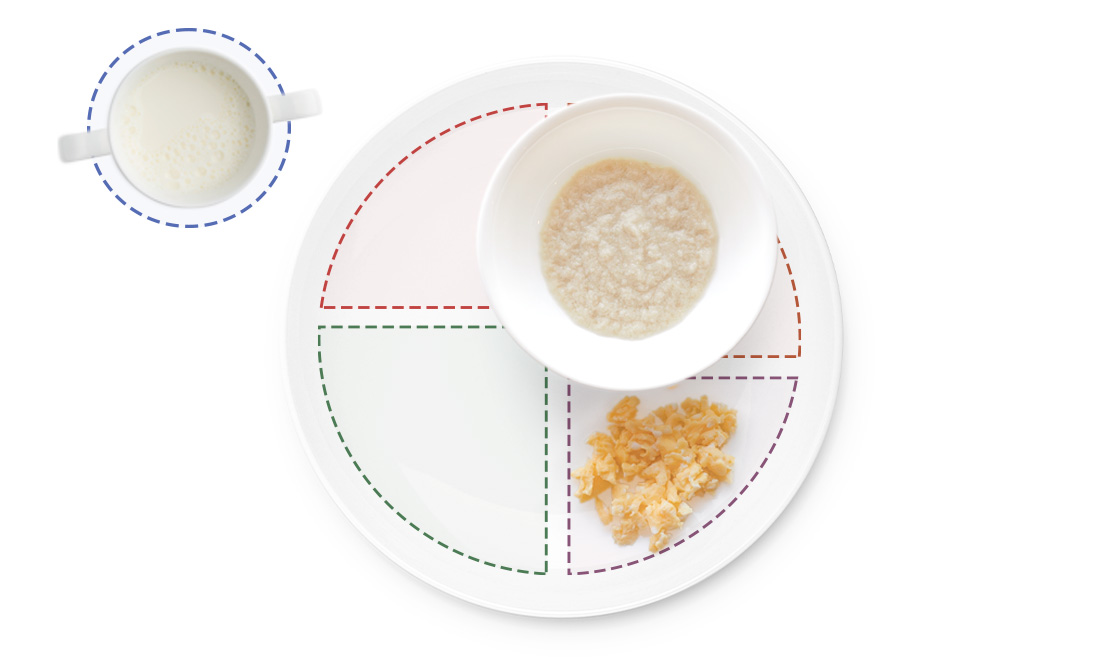
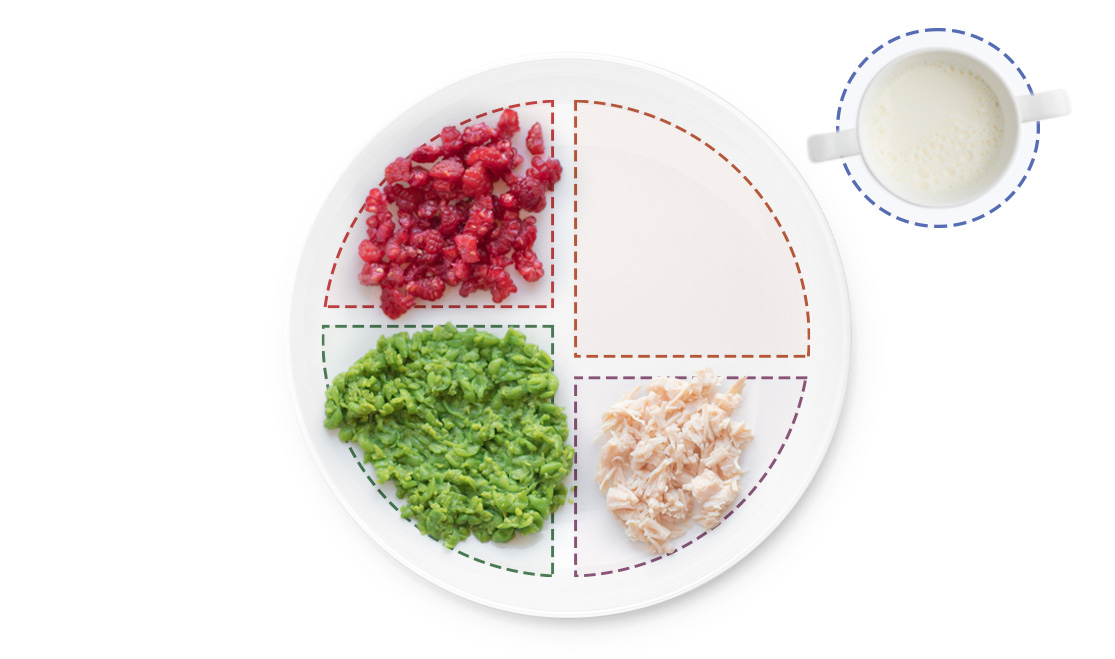
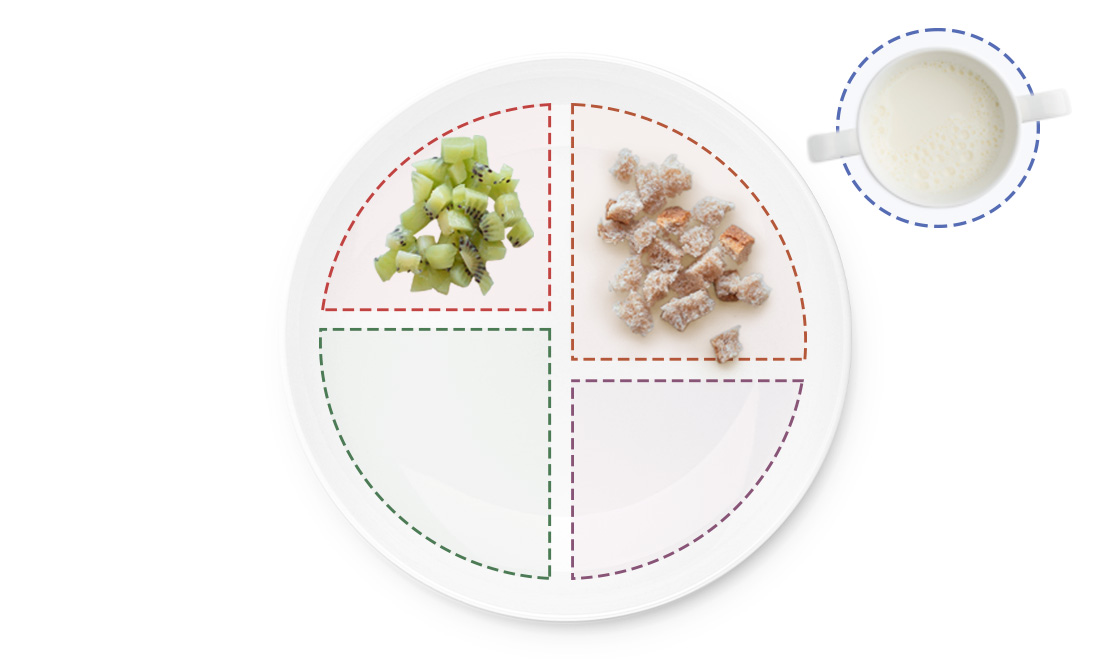
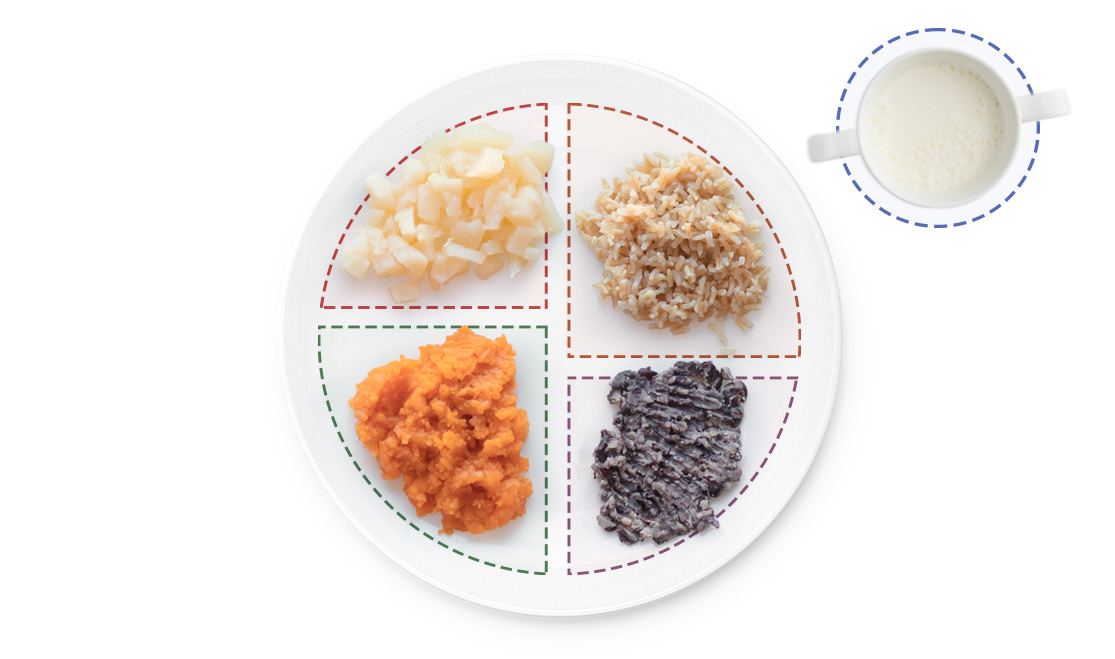

Breast milk is the most important source of nutrition for your baby, even after you start offering solid foods. Start offering whole milk when your baby is one year old.
Continue to nurse on-demand, 3 or more times per day.
16-24 oz. per day.
Offer formula in a cup.
4-8 Tbsp. per day.
Unsweetened, mixed, and high protein cereals.
Dry toast, crackers, bread, bagels, rolls, or plain muffins.
Cooked rice and noodles.
8-12 Tbsp. per day.
Cooked bite-size vegetable pieces.
8-12 Tbsp. per day.
Fresh fruits, peeled, and in bite-size portions.
4-8 Tbsp. per day.
Finely ground, chopped, or diced meats, poultry, eggs, fish, or cooked mashed beans.
Here are some examples of what meal and snack portion sizes might look like on my plate.


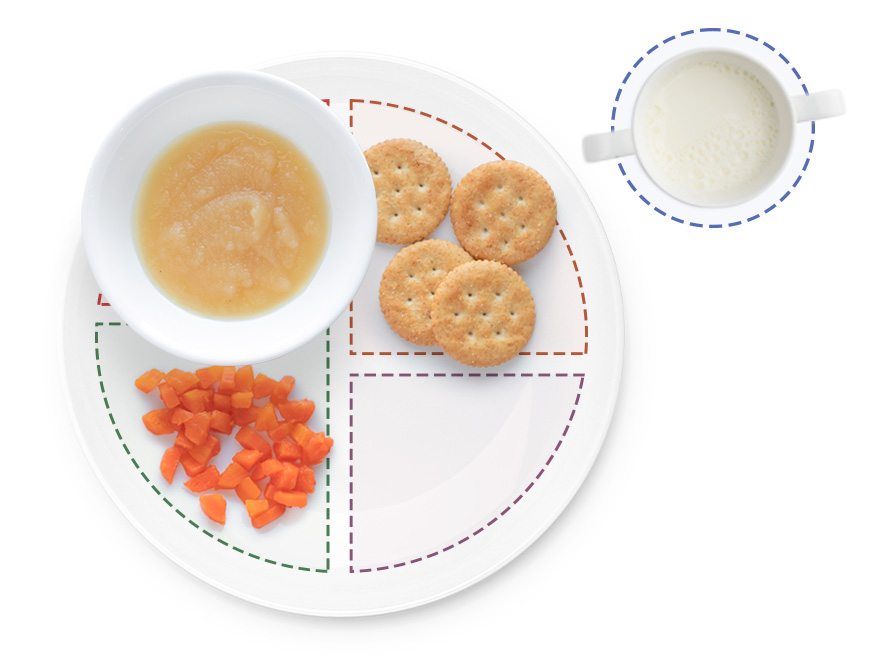
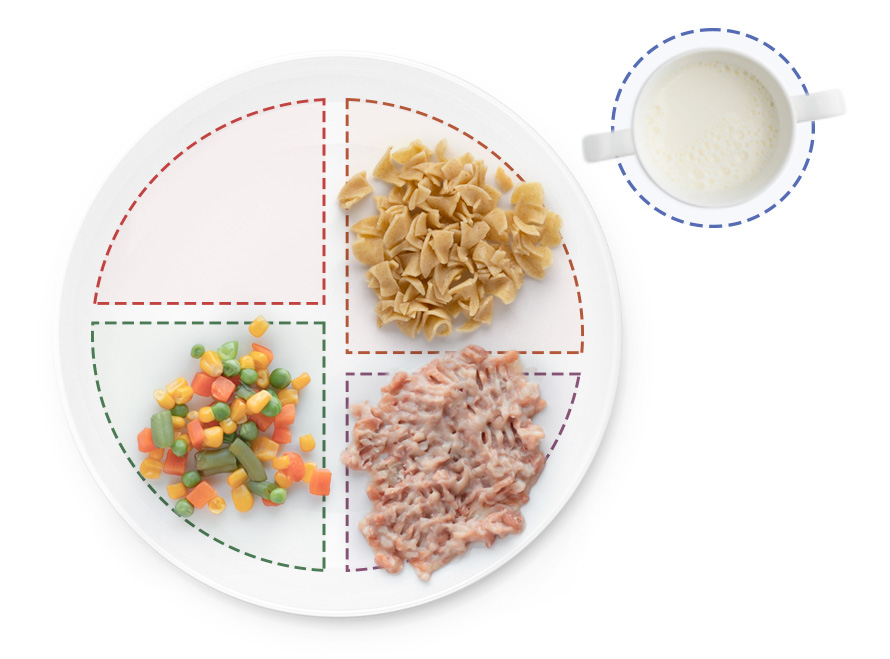


Breast milk or formula is all your baby needs for the first six months of life. Your baby’s digestive system is not ready for anything else until about 6 months of age.
Feed your baby on-demand, when they show signs of hunger, like sucking on their hands or smacking their lips. Stop feeding when they show signs they are full, like turning their head away, relaxing their hands, or falling asleep.
If bottle feeding, offer a small amount at a time, about 2-3 oz. Never force your baby to finish a bottle.
The American Academy of Pediatrics recommends breastfeeding for the first six months and that breastfeeding continue for at least 12 months, or longer, as desired by mother and baby.

Wait to offer solid foods until your baby:
Try one new food at a time.
Wait 5 days before trying another new food to watch for allergies. Food allergies may include wheezing, rash, or diarrhea.
Babies under one year should NOT have honey, cow’s milk or other non-dairy drinks, or foods that can cause choking like nuts or whole grapes.
All babies are different.
Talk with WIC or your baby’s healthcare provider about your baby’s needs.






Research suggests trying peanut butter as a baby may help prevent a peanut allergy later in life. This can be helpful for
families with food or egg related allergies, like eczema or other skin issues.
Introduce your baby to peanut butter around 6 months of age, after they have tried other solid foods. Watch your baby for
any reaction for two hours after they try it.
Mix peanut butter with water, formula, breast milk, or food:
Side-Lying Hold
This hold is useful when:
Cross-Cradle Hold
This hold is useful when:
Clutch or “Football” Hold
This hold is useful when:
Cradle Hold
This hold is useful when:
Laid-Back Hold
This hold is useful when: